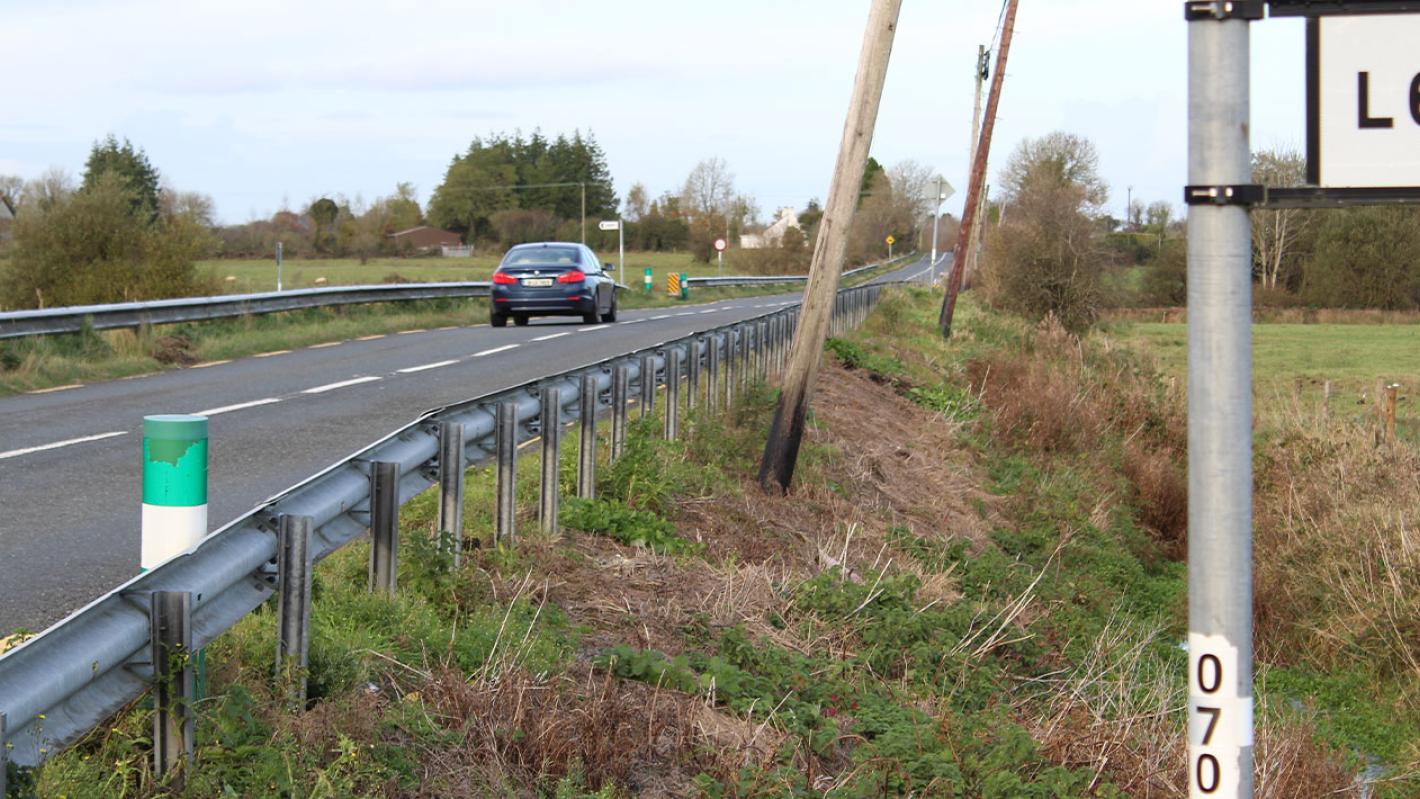
Site photo showing telegram poles leaning due to poor ground conditions.
A road development scheme aimed at improving road safety and improving accessibility

This project comprises the construction of a new national primary road, approximately 5km in length, along the existing N61 in Co Roscommon and all ancillary works.
The proposed development links the N61 Tulsk to Clashaganny Road project in the south to the N5 Ballaghaderreen to Scramoge Road project to the north. It aims to improve the road carriageway, enhance traffic safety, reduce accidents, and improve accessibility, particularly for pedestrians and cyclists.
ROD-AECOM has been commissioned by Roscommon County Council to provide technical consultancy services for Phases 1 to 4 of the TII Project Management Guidelines, i.e. up to and including planning.
Phase one was completed in 2022, and the emerging preferred route corridor is expected to be presented at a public consultation in early 2023.
While the existing N61 alignment is relatively straight horizontally, it has two substandard curves to the north and is visibly substandard in terms of vertical alignment and cross-section. The substandard vertical alignment is due to poor underlying ground conditions in the vicinity, resulting in differential settlement of the carriageway. This makes travelling the route uncomfortable and potentially dangerous for unsuspecting road users travelling close to the speed limit.
Poor ground conditions also impact the effectiveness of the safety barrier and the foundations of telegraph poles, signs and other street furniture. To maintain the existing road pavement in a satisfactory condition, significant periodic structural repairs have been necessary, a solution that is not sustainable in the long term. The issues can only be addressed by appropriate intervention in the form of a newly-constructed carriageway addressing the inherent deficiencies of the existing N61 over its length.
The underlying ground conditions comprise cut-over peat, marl and alluvium associated with watercourses, interspersed with sections of till derived from limestone. The option selection process and buildability assessment will be informed by a ground investigation (GI), which will determine the depth and extent of the soft ground.
As the GI logs highlighted peat and marl deposits of up to 18.6m immediately adjacent to the existing route, our geotechnical team will play a crucial role in identifying the preferred solution and developing the scheme design, thus enabling us to accurately assess the potential environmental impacts in advance of planning.